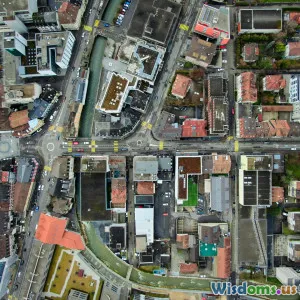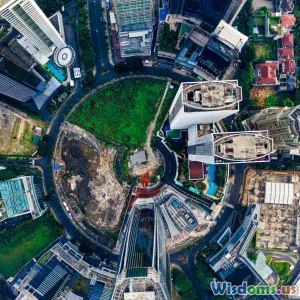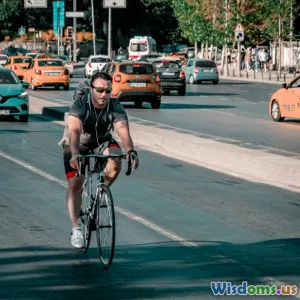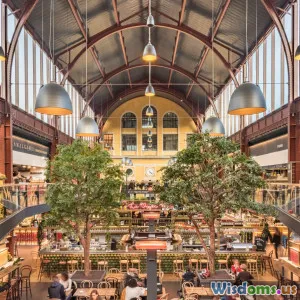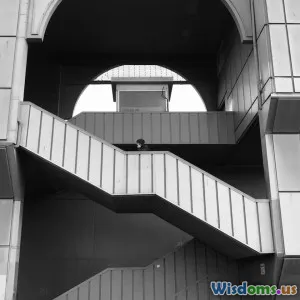
Ten Human Scale Cities That Prioritize Walkability
9 min read Explore ten exemplary human scale cities where walkability enhances daily life, urban vitality, and sustainability, transforming streets into thriving, pedestrian-friendly communities. (0 Reviews)
Ten Human Scale Cities That Prioritize Walkability
In a world rapidly urbanizing and grappling with environmental issues, the design of our cities matters more than ever. Human scale cities, specifically those that prioritize walkability, offer a powerful antidote to the sprawling, vehicle-centric urban development model. These cities champion streets and neighborhoods that feel approachable and engaging — places where people can comfortably walk, connect, and thrive. This article takes you on a global tour of ten cities that embody this principle, revealing how pedestrian-first planning shapes vibrant, sustainable urban life.
Understanding Human Scale and Walkability
Human scale refers to city design that aligns with the physical proportions and sensory needs of people. It favors features that feel comfortable, accessible, and inviting. Walkability is a foundational characteristic, encompassing safe, direct, accessible, and interesting pedestrian networks which enable residents to move about without reliance on cars.
Walkable cities encourage physical health, reduce pollution, improve social cohesion, and support economic vitality.
1. Copenhagen, Denmark
Copenhagen is often hailed as the gold standard of walkable and bike-friendly urbanism.
- Infrastructure and Policy: Nearly 62% of Copenhageners commute by bike or foot daily. The city invested heavily in pedestrian plazas and separated bike lanes, ensuring safety and fluid movement.
- Public Spaces: The transformation of streets like Strøget—a traffic-free shopping street since 1962—marked a significant early commitment to pedestrian-first planning.
- Outcomes: Research indicates higher life satisfaction and lower pollution levels, making Copenhagen a blueprint for walkability amid a cold, northern climate.
2. Barcelona, Spain
Barcelona’s superblocks (“superilles”) initiative reduces inner-block car traffic, freeing streets for pedestrians and cyclists.
- Urban Form: Designed around a grid with chamfered corners, the city’s structure inherently supports walkability.
- Superblocks: These are clusters of city blocks where traffic is restricted, converted into green spaces, plazas, and playgrounds.
- Impact: Traffic accidents dropped significantly; local businesses report increased foot traffic, strengthening the community fabric.
3. Montreal, Canada
Montreal boasts a diverse built environment with a clear emphasis on pedestrian comfort.
- Pedestrian Network: The city features vast pedestrian corridors like the Underground City (RÉSO), connecting multiple buildings, shopping areas, and subway stations.
- Winter Adaptation: Cold seasons are eased by heated indoor-complexes and well-maintained sidewalks to ensure year-round walkability.
- Walk Score: Montreal frequently ranks as one of North America’s most walkable cities.
4. Melbourne, Australia
Melbourne places human scale and walkability at the core of its urban planning, balancing heritage preservation with modern needs.
- Laneways: Narrow lanes have been revitalized as lively pedestrian precincts filled with cafes, street art, and boutique shops.
- Tram Network: Complementing walkability, Melbourne’s extensive tram system connects neighborhoods, reducing car dependence.
- Government Commitment: The city’s 2030 Urban Forest Strategy aims to expand pedestrian zones and green leafy streets.
5. Amsterdam, Netherlands
Like Copenhagen, Amsterdam has prioritized people over cars for decades.
- Compact Layout: Its dense, canal-established neighborhoods promote intimate, human-scaled experiences.
- Cycling Culture: With extensive bike paths away from pedestrian walkways, the city reduces conflict and fosters easy movement on foot.
- Community Events: Regular car-free days encourage pedestrian use of public spaces and support community engagement.
6. Freiburg, Germany
Freiburg’s urban form reflects a strong commitment to sustainability and pedestrian access.
- Vauban District: A leading example of car-reduced living, this neighborhood prioritizes walking while reserving minimal parking.
- Transit-Oriented Design: Efficient trams and bus lines integrated with dense residential streets promote walking.
- Green Spaces: Parks and pedestrian paths weave through the city, enhancing well-being.
7. Kyoto, Japan
Kyoto’s historic urban fabric is inherently walkable, with narrow streets and abundant pedestrian amenities.
- Cultural Preservation: Many districts retain ancient street patterns, promoting slow walking and local discovery.
- Transport Integration: Buses and trains connect directly to walkable neighborhoods, enabling easy access without cars.
- Tourist Friendly: Guided walking tours and pedestrian zones protect the city’s heritage while inviting exploration.
8. Portland, Oregon, USA
Portland is a leader in sustainable urbanism and progressive walkability strategies in the US.
- Mixed-Use Neighborhoods: Land use policies promote integration of housing, shops, and offices, reducing travel distances.
- Active Transportation Network: A comprehensive system of sidewalks, pedestrian bridges, and greenways supports walking and biking.
- Community Input: Citizen involvement ensures that pedestrian needs are prioritized at a neighborhood level.
9. Buenos Aires, Argentina
Buenos Aires balances vibrant street life with urban design focused on pedestrian movement.
- Wide Sidewalks: Avenida de Mayo and Florida Street showcase expansive, shaded sidewalks bustling with pedestrians daily.
- Cafés and Plazas: Public squares serve as natural gathering points, enlivening walkability and social interaction.
- Urban Revitalization: Continuous investments in lighting, benches, and pedestrian crossings enhance safety.
10. Zurich, Switzerland
Zurich’s compact, well-organized layout facilitates a pleasant and secure pedestrian experience.
- Public Transit Integration: Seamless connections between trams, trains, and pedestrian zones encourage walking as part of multimodal trips.
- Pedestrian Zones: The Bahnhofstrasse shopping street is largely traffic-free, providing a calm and safe environment for shoppers and tourists.
- Performance Metrics: Zurich consistently scores top marks in global walkability rankings due to accessibility and infrastructure quality.
Why Walkability Matters: Evidential Benefits
Cities that focus on walkability see tangible improvements:
- Health: Studies by the World Health Organization show walkable neighborhoods reduce obesity, cardiovascular diseases, and improve mental wellness.
- Economy: According to the Project for Public Spaces, walkable downtowns have higher retail sales, property values, and tourism.
- Environment: Human scale cities reduce dependence on cars, lowering greenhouse gas emissions and noise pollution.
Jane Jacobs, a pioneer in urban studies, famously asserted, "Streets and their sidewalks, the main public places of a city, are its most vital organs."
Conclusion
The cities highlighted proudly prove that when urban environments embrace human scale and prioritize walkability, the results ripple across quality of life, environmental sustainability, and economic resilience. From Copenhagen’s celebrated bike paths to Kyoto’s centuries-old pedestrian routes, the common thread is respect for human movement and interaction. As future cities aim for inclusivity and sustainability, these cities offer essential lessons and inspiration.
Embracing walkable, human scale design invites us all to rethink how we live — on foot, connected, and thriving in communities built for people first.
Walkability is not just a design choice; it’s an investment into our collective future.
Rate the Post
User Reviews
Popular Posts










